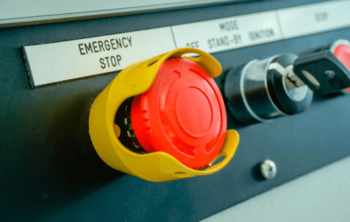Prior to the pandemic, many organizations relied upon the steady availability of supply chains that worked ‘all the time’. Companies would optimize their processes to reduce costs and delays, and so improve overall efficiency. To the pandemic has been added the challenges of war and climate events, and ‘resilience’ has become the watchword of businesses that previously pursued efficiency as their ultimate goal.
About a year ago, I wrote about how we can keep pace in an increasingly volatile, uncertain, complex and ambiguous (VUCA) world. Since then, things have only got more ‘VUCA’. If we’re to cope, survive, and even thrive, it’s vital we as business owners communicate with, train, and empower teams to adapt in the face of any and every change that comes our way.
And we must understand and manage the risks this ever-changing environment presents to our businesses, as well as our staff.
With technology’s growing capacity to capture and analyse data, investing in the right solutions can help reduce a business’s risk profile. One solution we all know and love is Way We Do, as it gives businesses access to dynamic, controllable management systems for things like risk, as well as the capability to develop and refine policies, procedures and processes for managing, mitigating and responding to it.
The Global Risk Landscape
Earlier this month, BDO released their Global Risk Landscape Report 2022. Based on their research, which involved engaging with 100 C-suite executives in the Asia-Pacific (APAC) region, the report highlights the risks these businesses feel most unprepared for, with geopolitical tensions unsurprisingly at the top of the list.

Supply chain risks
The ongoing war in Ukraine has certainly raised businesses’ awareness and concern over geopolitical tensions. It has also caught them unprepared through increased energy costs and supply chain interruptions.
In response, these leaders are planning to build more resilience into their supply chains, with around 60% working to expand their supply chains over the next 18 months. Of these businesses, BDO learned about 30% are investing in supply chain analytics technology, 20% are introducing dual sourcing, and 20% are hiring digital talent as part of their response.
Cyber security risks
Interestingly, while cyber security made it into these leaders’ Top 10 risks, BDO noted the sentiment towards potential threats in the APAC region was more confident than in other regions. BDO put this down to longer supply chains in this part of the world, as well as the history of fewer attacks compared with Europe and North America.
Environmental risk
Another factor BDO discussed in their report was the impact of climate events, like severe extremes of heat or cold, floods, storms and wildfires. While APAC leaders rated the effects these events can have on their staff and their suppliers as high, they were more concerned with the impacts of tougher environmental regulations on their businesses. This in an location that BDO noted was more susceptible to extreme weather events like typhoons and floods. A staggering 78% of respondents gave the impacts of climate change on their businesses and supply chains as a medium or low priority, something the report warned left them open to significant risk.
Risk-aware culture
Building a resilient business means fostering a culture of ‘risk awareness’ — being alert, not alarmed as the saying goes. A risk aware culture is one that establishes and maintains good defences, and responds quickly to threats. As BDO showed in their report, instead of relying solely upon the availability and accessibility of their ‘always on’ supply chains for raw materials, commodities, ports and personnel, business leaders must consider strategies based on alternatives that provide flexibility and adaptability.
We can no longer rely on the risk assessments we may have completed a year or more ago. We’re faced with different types of disruption, and more VUCA than we can fully prepare for. To adapt and survive, we must create early warning systems that help us identify new and emerging risks so we can prepare appropriately and respond quickly.
Organizations that identify and understand emerging risks will fare better and be more resilient than those that do not. There are businesses that are already addressing risk proactively by pivoting their business models, investing in digital technology, and building a better understanding of their suppliers’ dynamics. In doing this, some are even finding opportunities for new revenue streams, further boosting their businesses’ resilience.
How prepared are you?
What risks do you feel your company is most unprepared for? And which management systems are you considering implementing as a means of mitigating them? Share your thoughts in the comments below and continue the conversation.





